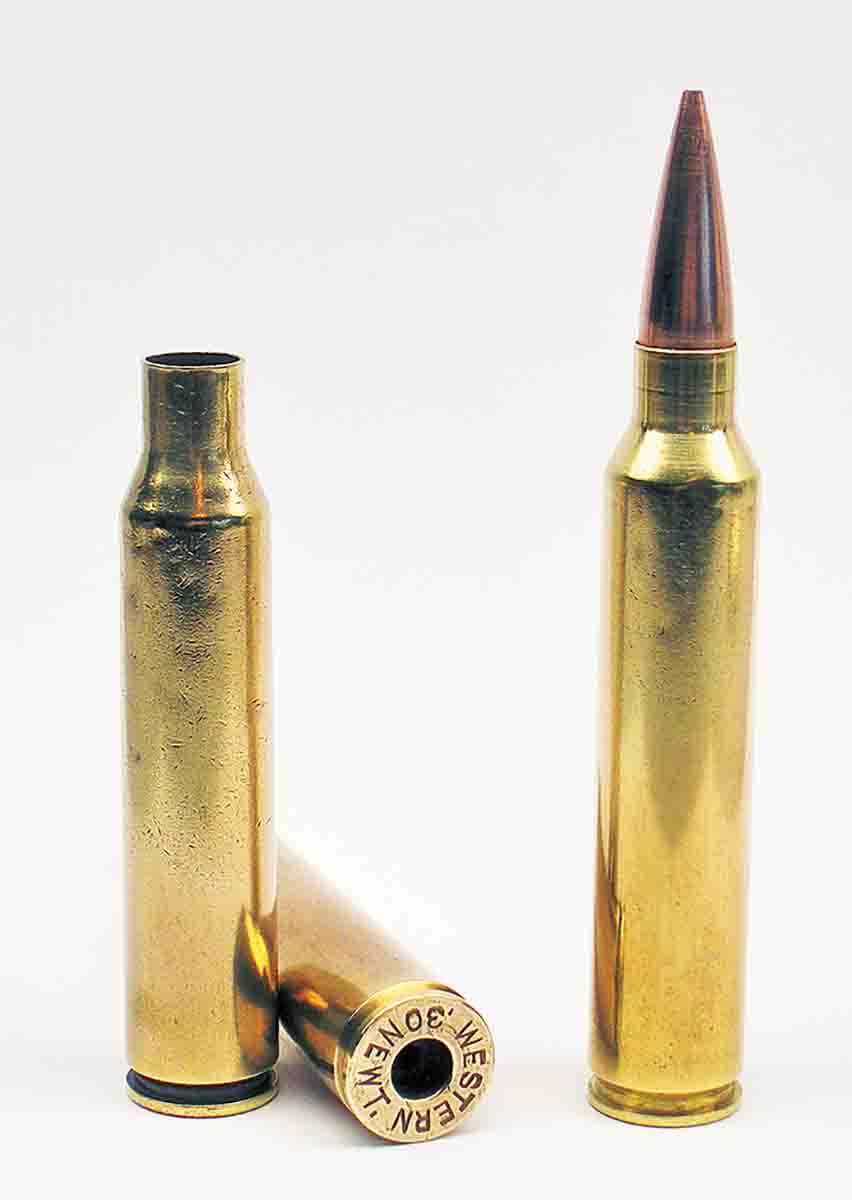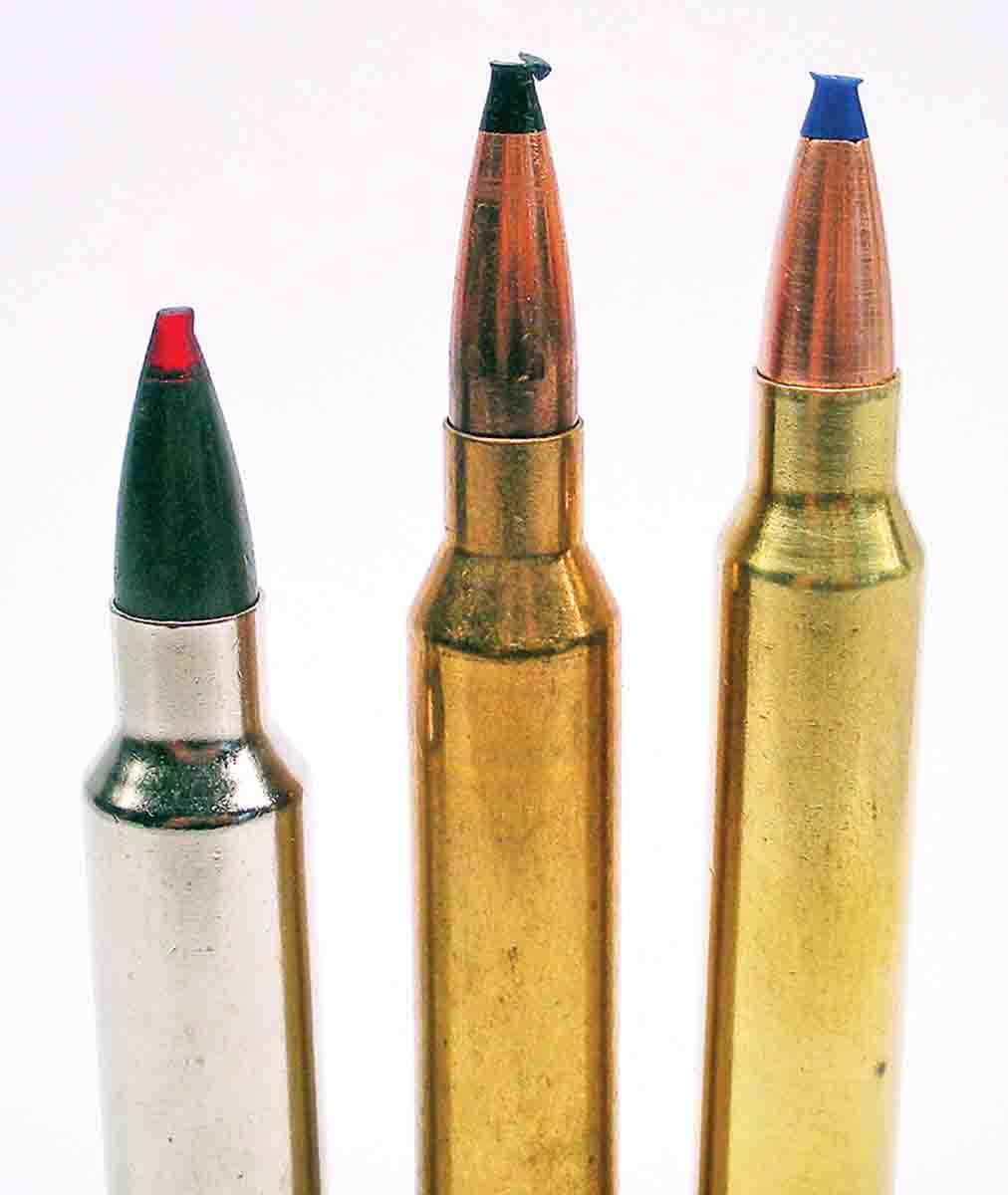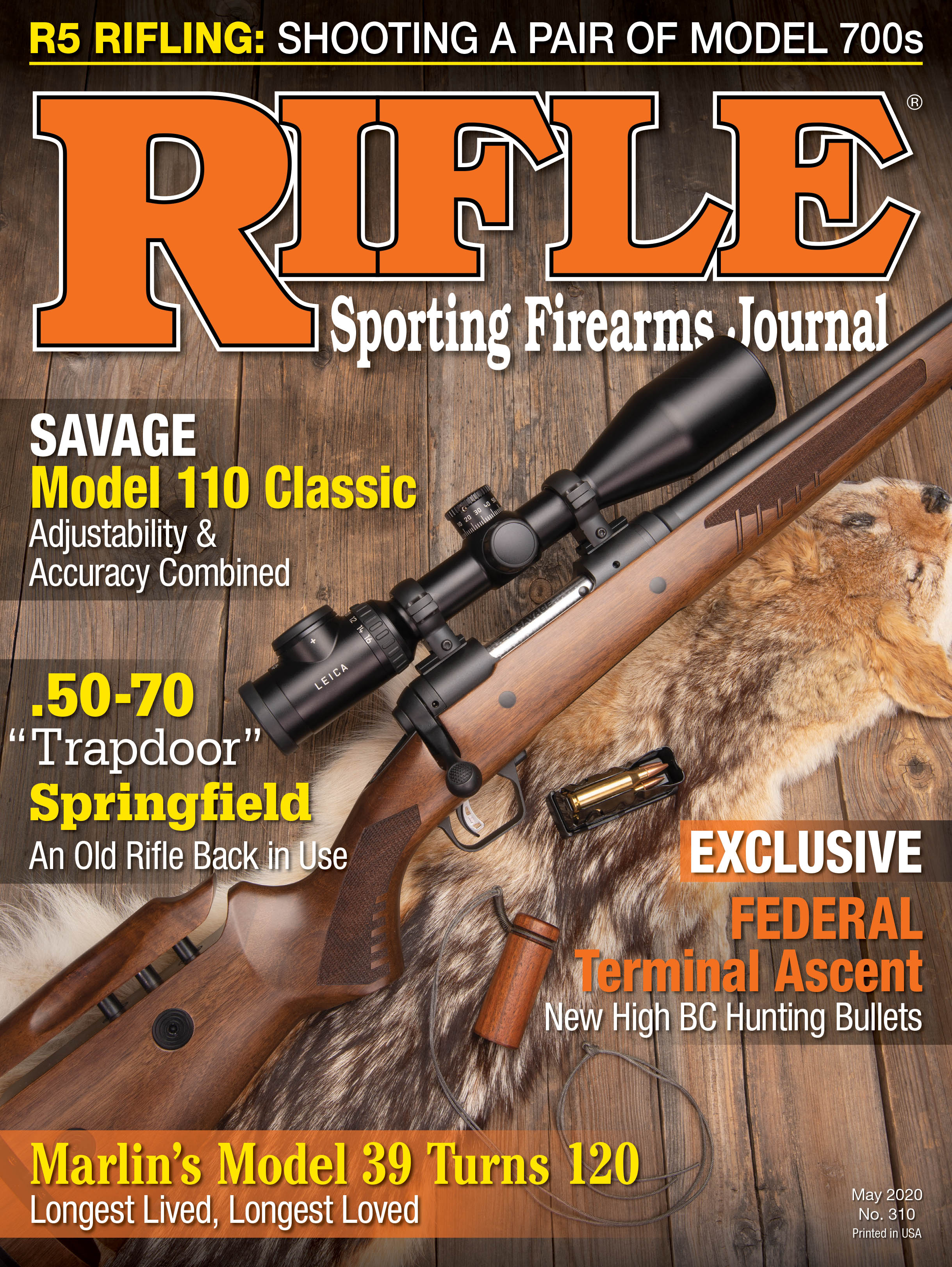Spotting Scope
What's New?
column By: Dave Scovill | May, 20

Does a new rimless medium- sized 6.5 on a fat case have potential, or will it suffer the same fate as the 6.5 Remington Magnum that likely holds the world record for marketing disasters to be widely acclaimed as the cartridge of the “new age” that was dropped like a hot rock shortly thereafter? Those of us who have been to at least 30 SHOT Shows have seen it all, like new cars at the Specialty Equipment and Marketing Association (SEMA) shows where new vehicles are more fuel efficient with added horsepower, additional cup holders and charging ports every new model year.
The 6.5 PRC, however, goes in the opposite direction from the 6.5 Creedmoor that is essentially the great ancestor of the 6.5x55, circa 1892, of all midsized 6.5 cartridges that are essentially the same thing. A friend in Finland laid it out plain and simple, “You can’t kill a moose (aka älg) any deader than the 6.5 Swede has been doing for nearly 120 years.”
Nevertheless, there has been a lot of compressed hot air generated over the newest 6.5s as to which will be the “perfect” deer cartridge, in spite of the fact there is no such thing as the “perfect” deer cartridge any more than there is a perfect car. Neither will the new 6.5s survive long enough to replace the number of .30-06 rifles built since 1906, or the .270 WCFs since 1925. Moreover, it is unlikely that the current crop of new 6.5mm cartridges will collectively challenge the number of .30-30 Model 94 Winchesters and Model 336 Marlins in circulation.
The point is, the current “latest and greatest” will not short-stop the race to find the next new wonder of the age, and the next, ad infinitum. Manufacturers would die on the vine if they didn’t produce new product lines for the press corps to hype on magazine covers and/or TV shows. The 6.5 PRC is simply the most recent in a series of medium-sized 6.5s that were supposed to end the debate in North America years ago, starting with the now-defunct 6.5 Remington Magnum. Just remember it was the gun press that introduced the 6.5 Remington Magnum, .264 Winchester Magnum and .260 Remington with great fanfare, then pitched them overboard.
In Europe, nobody wildcats a 6.5x55 case, with the exception of the 6.5 SKAN, a target cartridge of some merit. Why? Mostly because the Europeans have spent 129 years tweaking it, and there is little, if anything, that can be done to improve it now. I’ve heard over the grapevine that the 6.5 Creedmoor is better, whatever that means, than the Swede, but those are fighting words in Scandinavia.
The other current commercial European/sporting 6.5 is based on the 7x57mm Mauser that has the same case head size as the herd of new midsized, short-action 6.5s in this country. It too, like the Swede, was rarely encountered in North America by those who chose to remain smitten by fast-talking gun writers. It is, however, capable of minute-of-world-class trophy chamois, and until the new 6.5s score on the target range or in the field, it’s all just talk.
.jpg)
Of course, this seemingly endless search for the ideal deer cartridge and the rifle or carbine to fire it on this continent began in 1894 with the Winchester Model 94 .30 WCF, the first smokeless sporting cartridge and its stablemate, the .25-35 WCF. Of the two, the .30 WCF was considered the ideal deer cartridge, but photos from folks all over North America showing moose, grizzly and other big game such as goats and sheep taken with a .30 WCF indicate some hunters appear to have had a bit more respect, and the firsthand experience to back it up, than the gun press can muster nowadays.
The .25-35 WCF was considered more of a triple-purpose varmint, predator, small and deer-sized game cartridge. Considering its lackluster popularity since World War II, it shows what happens when folks try to provide a single cartridge to fit too many purposes. A wise, old logger I worked with many years ago said that was the result of being at “cross purposes,” which essentially means it does nothing well. Either way, the Model 94 Winchester is largely considered to be the most ergonomic sporting firearm ever built, not to ignore Old West mystic.
From the moment the Model 1894 .30 WCF hit the market, competitors were consumed with the challenge of duplicating, or surpassing, what would eventually become the world’s longest production sporting firearm.
Right off, Remington came out with a pump rifle chambered for the .25, .30 and .32 Remington rimless cartridges that effectively duplicated the Winchester brand in a rather half-hearted effort to compete. Marlin and Savage tuned in as well but chose to use the Winchester cartridges and a couple of their own in a lineup that would include the .32 WSP in 1902, along with the .32-40 and .38-55 black-powder cartridges. That’s all it took, two black-powder and three smokeless cartridges to rock the sporting rifle market back on its heels in 1894, and nothing quite like it has happened since.
The next revolutionary breakthrough in the firearms industry was the Mauser bolt-action rifle that was eventually sporterized for civilian use. Some might consider the AR-15 the new wonder rifle, but it has only been around since 1964 and for most of that time was banned ... still is in some quarters. It will likely take a thousand years for the ARs to catch up with the number of bolt actions on the planet. At any rate, Mauser bolt-action copies still rule and were based on four models, the 93, 94, 95 and finally the M98 that included the 6.5x55, 7x57mm and 8mm Mauser cartridges (not necessarily in that order), the latter of which introduced the light-for-caliber 154-grain spitzer (pointed) that would lead to small arms that were originally chambered for a 220-grain roundnose .30-caliber slug in the Krag and 1903 Springfield to a 150-grain spitzer in 1906.

The 6.5 standards that number up to 32 cartridges worldwide dropped from 160-/156-grain roundnose designs to 139-grain spitzers, the latter of which is so predominant today that folks would be hard pressed to find a box of 156- to 160-grain 6.5mm bullets in the Lower 48, because they will not fit in the current crop of short-action rifle chambers without deep seating, i.e., taking up valuable powder space. How quickly people have apparently forgotten that it was the heavier roundnose 6.5 bullets that made the 6.5x54 (aka .256) Mannlicher so popular to begin with.
From the mid-1900s until the early 1950s, military rifles and cartridge designs would dominate the international firearms market. The sporting rifle industry was nearly stagnant with the introduction of the .277 and .257 calibers in addition to the .30-06, 7mm and 8mm Mausers. In Europe, Holland & Holland introduced the H&H Super .30 and commercialized the 6.5 Swedish while the sporting rifle and cartridge designs for big game, including African plains game and dangerous game, nearly spun out of control while transitioning black-powder standards to smokeless.
From the late 1940s up to present day, commercial sporting firearms are largely based on the M98 Masuer bolt action. Wildcat cartridges ran the gamut, from the .30-06/8mm and .308 Winchester case head size to the belted H&H and the basic .404 Jeffery case (.553 inch) that evolved into the beltless Newton (.522 inch) design way back in 1917 and currently wears the Hornady headstamp.
Remington and Winchester picked off some of the most useful belted wildcat short magnums and filled in the gaps with the .348 and a series of cartridges based on the rimless and rimmed .308/.307, respectively. Remington jumped to its Ultra Mag that up until the 1980s had formed the basis, with minor changes, for a variety of big-bore African cartridges. Winchester came up with a series of short/fat magnum cartridges in the early 2000s that mirrored wildcats on a line of short/fat cartridges based on the .348 WCF from the 1950s. Other than that brief roundup, there’s nothing new or revolutionary under the sun, although Remington did take a crack at caseless cartridges and electronic rifles several years back.
For folks who are not familiar with most of this stuff, don’t worry, you didn’t miss much. Most students in gunsmithing schools don’t know who Jack O’Connor was, and a lot of folks are of the opinion that they could have stopped making new stuff after the .270 WCF was introduced in 1925 and been done with it.
In effect we have traveled from what would become the most popular rifle and cartridge duo in the 127-year-old legacy of the Model 1894 Winchester that parallels development of the M94/96 Mauser bolt action chambered for the 129-year-old 6.5x55 Swedish Mauser that inspired its duplicate in 2008. We are still shooting the same 129-year-old rifles, bolts and lever actions, our great-grandfathers used, and the best the industry has been able to come up with in all those years is monolithic copper or gilding metal bullets with pointy plastic, aluminum or polymer tips that may or may not break off under heavy recoil and clog up the magazine follower. Maybe this column should have been titled “Old Stuff Rules.”


